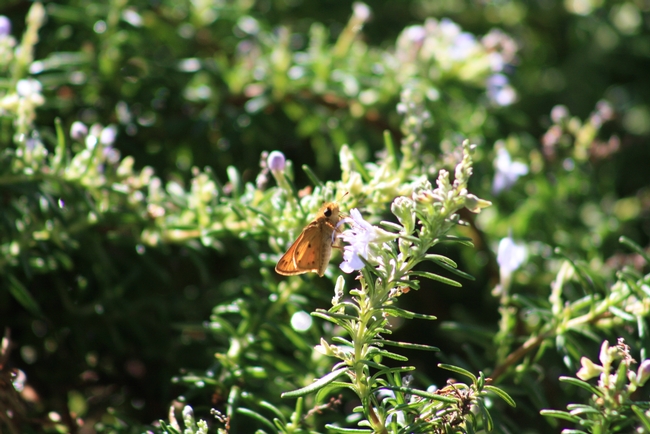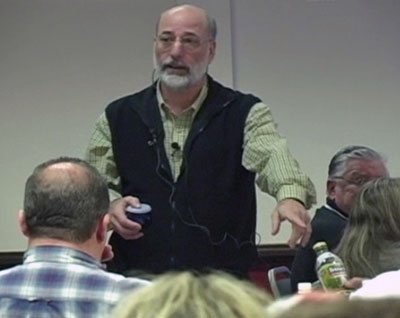UC Blogs
Not all blueberries are alike
As blueberries have become more a popular plant for home gardening, variety choices have blossomed, wrote Laura Christman in the Redding Record Searchlight.
When it comes to flavor it's hard to go wrong with any variety of homegrown blueberry, said Manuel Jimenez, a University of California Cooperative Extension farm advisor specializing in blueberries.
"All the varieties that ripen on the plant are good," said Jimenez, who is based in Tulare County.
Among the varieties Jimenez recommends are Misty, Reveille, Sharpblue, Star, Legacy, Emerald and Jewel.
The best time to plant blueberries is in the fall, when the ground is warm and plants can establish roots, Jimenez said. However, most nurseries don't feature them in fall. The biggest selection of blueberry plants is available now.

Manual Jimenez talks blueberries at the UC Kearney Agricultural Research and Extension Center last fall.
Gardening Tips for Going Green
Gardening can provide exercise and reduce stress. Gardens make your surroundings more beautiful and serene, and vegetable and fruit gardens can provide healthy food for you and your family. The downside to gardening is that it can be expensive and toxic to you and the environment. However, with a little awareness and better choices, you can reduce the use of toxic chemicals, have a greener garden, and even reduce costs by recycling every day items. Here are a few tips for going green:
- Reduce use of harsh or toxic chemicals. Look for natural or less toxic methods to enrich the soils and controls garden predators. Healthy plants are naturally more resistant to diseases.
- Consider your gardening spaces with conservation in mind. Choose an overall design that conserves water and works well with the existing landscape and weather zone.
- Figure out the microclimates in your yard by season. Where does the sun hit during the summer/winter? Where are the shady spots? Which way does the winds blow and when? What other exiting factors may affect your garden such as, a pool, pond, or shade from large trees or buildings. These factors can make a huge difference on the survival of certain plants.
- Water-wise Gardening. Select native and drought tolerant and pest resistant plants whenever possible. Check out www.solanosaveswater.org for a list of local plants as well as turf replacement rebates.
- Compost yard waste. Contact your local Master Gardener’s for home composting information. If you can’t create compost pile your yard, then put all your green waste in your green cart. Most cities require that green waste be turned into compost and diverted from landfill. Several local landfills also provide free mulch to residents. Check with your local garbage company or landfill to see if they are providing this service.
- Reuse or Recycle. So many items can be reused for the gardening. Try using egg cartons to start seedlings or 2 liter bottles, with the bottoms cut off, to cover seedlings – miniature green houses, complete with ventilation. You just remove the screw cap if it starts to get too warm. Reuse plastic “to go” cups or jars for mini- window green houses.
- Be creative! Need a planter or a few bricks for your backyard? Try yard sales, second hand stores, look on FreeCycle.com, the “free” section of the local paper, or Craig’s List for items that might be turned into a planter or maybe used as stepping stones.
- Become informed! Do research online, join garden chat group, a local gardening group, or contact the Solano County Master Gardener’s to learn more about Green Gardening Tips!
Look around, there are lots of examples of creative recycling. I recently saw at the San Francisco Renegade Craft fair, beautiful terrariums made out of recycled glass containers with little “toys” such as Star Wars characters inside as well as a “boot” planter!
What have you done to be creative – have you recycled or given new life to in your garden? Tell me about it.
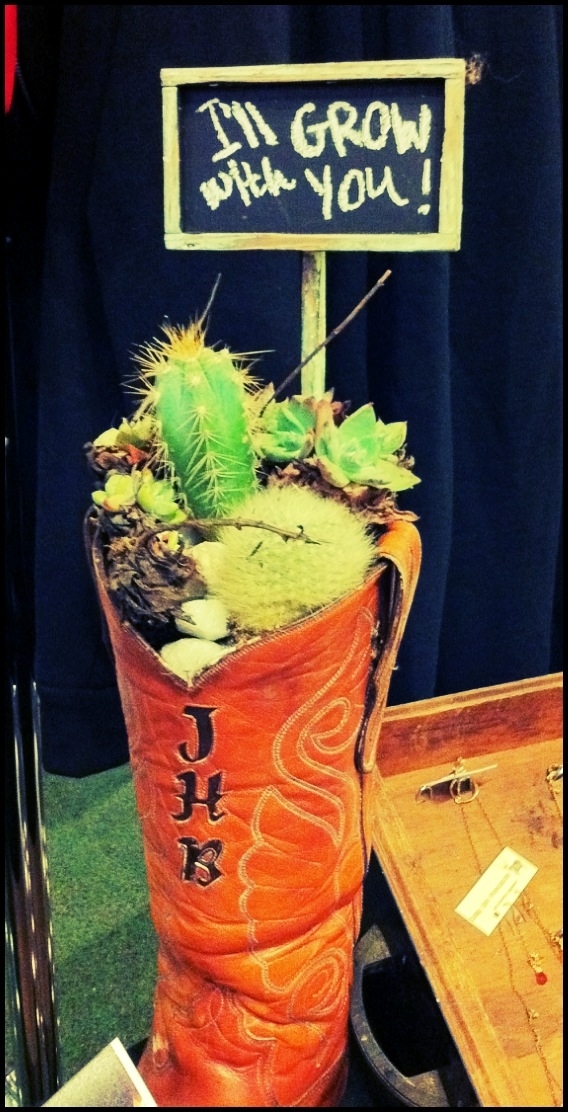
Cactus and succulents in a boot. (photos by Esther Blanco)
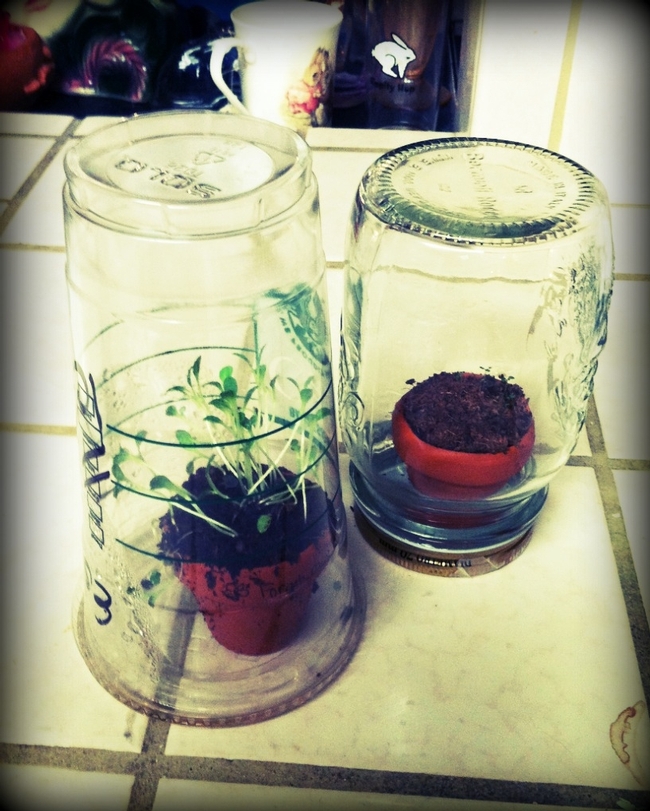
Recycled cup and jar.
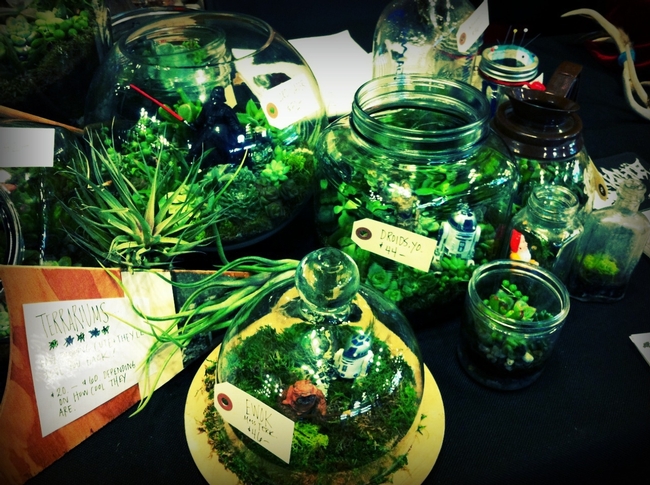
Recycled containers for terrariums.
What Butterflies Tell Us About Tropical Diversity
What do butterflies tell us about tropical diversity? Take it from an expert. Tropical ecologist Philip DeVries of the Department of Biological...
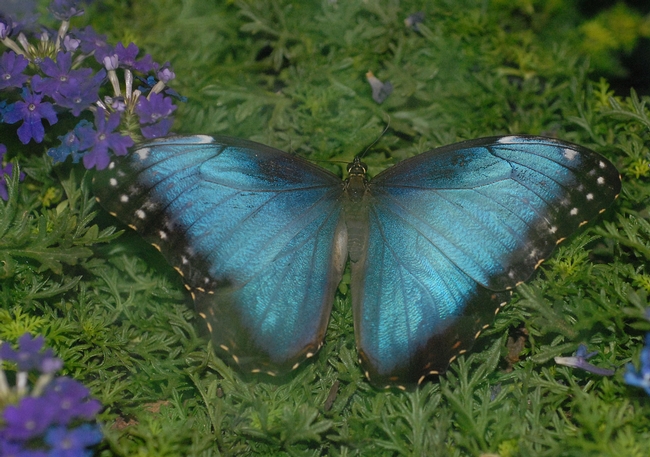
Morpho butterfly, a genus that Phil DeVries studies. (Photo by Kathy Keatley Garvey)

Phil DeVries with a Morpho (genus) butterfly. (Photo by Carla Penz)
Harbingers of Spring
Ever since I moved to California, I've been privy to a late winter treat that I've never had before. Amidst the cast away debris of winter, some plants perform so beautifully, that they are sorely missed later on even when everything else is in full bloom.
In my garden, the green lush fragrant rosemary (Rosmarinus officinalis) explodes in periwinkle flowers. The happy wanderer (Hardenbergia violacea) vine blooms profusely with tiny sweet pea shaped lavender flowers. Even the lilac bushes put on a show stopping magenta array to sniff at. There's shy little piles of violets and primroses, cyclamen, and some budding roses, who are probably just confused.
They're just what I need to get motivated after hibernation.
Florida citrus growers explore olive opportunities
Citrus growers in Florida, who are struggling with the devastating citrus disease huanglongbing, are considering growing olives, according to a report on the Tampa, Fla., ABC news affiliate.
Reporter Ryan Raiche covered a meeting at the University of Florida Citrus Research and Extension Center where UC Cooperative Extension farm advisor Paul Vossen introduced growers to olive production and marketing and offered citrus growers the opportunity to taste a variety of olives and olive oils.
“This is not a slam dunk, because this is a really peculiar crop that needs really specific things in order to flower and fruit,” Vossen said.
Olives thrive in a dry climate where it’s not too hot and not too cold. Vossen said rain during bloom season could wipe out the crop.
Ojai man appointed to Regional Water Quality Control Board
Ventura County Star
Gov. Jerry Brown has appointed Ventura County UC Cooperative Extension director emeritus Larry Yee to the Los Angeles Regional Water Quality Control Board.
The board oversees water quality issues and has the power to fine polluters.
Yee worked for the UC Cooperative Extension from 1975 to 2008 and was the Ventura County director from 1986 to 2008. He also was director of the UC Hansen Trust, which was set up to promote agricultural research and education.


